
Avoiding false moves - Mini Transat 2015
November 04, 2015
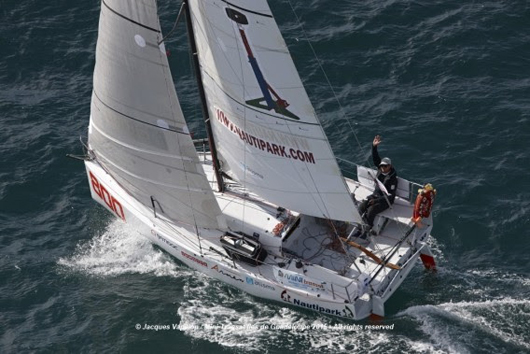
- Gybing battle in the trade winds
- A regime less comfortable than it looks
- Solitude in sight
| |
|
|
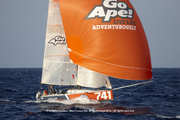 |
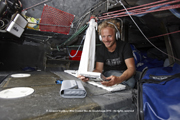 |
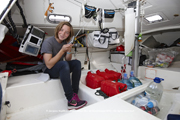 |
| |
|
|
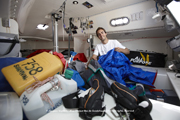 |
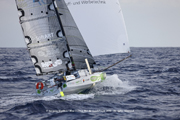 |
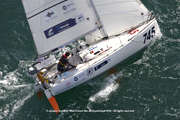 |
| click the images to view LARGER Images |
Powered by the trade winds, the Minis are avidly speeding across the Atlantic. Only gybes and the speed differences continue to create gaps. Getting the gybe right in the right timing, repositioning the boat at the right moment is a particularly delicate exercise. As upwind, the racers need to be aware of wind shifts, and find the edge closest to the course, while seeking to gain in the south.
Contrary to popular belief, sailing in the trade winds is far from plain sailing. First, the sun is not always shining. This morning Teranga, one of the support boats, reported overcast conditions, wind varying from 19-24 knots and messy seas. Not really a holiday pace when rising to the challenge of crossing the Atlantic as fast as possible, alone on a 6.50 m boat, the most habitable part being the cockpit. At these speeds, it is not uncommon for the waves to come up over the gunwale and the racers’ dilemma is to choose between the wet weather gear that has them soaked in sweat, or shorts and a T-shirt, at the risk of getting regularly drenched.
To be or not to be (happy)
The fifth day of racing is often a difficult transition to manage. With the dispersion of the fleet, VHF contacts are becoming increasingly rare: measuring the distance shows that for most racers, there are still two thirds of the course to go before arriving in Guadeloupe. This is when small setbacks can take on unspeakable proportions. A meal dropped on the floor, a sheet giving way, the generator showing signs of petering out are all excuses to flip out: "What the hell am I doing here? Where have the f ... support boats gone? Why can’t I hear the weather report properly?" Some react rationally: concentrating on what they know how to do, focusing on the positive (largely victorious) elements and letting go of what prevents them from fully enjoying the moment. Others go crazy: Some videos passages are not always in presentable condition on arrival, but it helps to release the small frustrations accumulated. Some, though they are few, even experience these moments joyfully and philosophically.
Calculations and assumptions
Of course, they must also stay focused on their race and negotiating the best trajectories. In the absence of the position of the other competitors, only the ranking allows the racers to identify their own. Still, these remain assumptions: every time they tack south, they are moving away from the direct route and automatically losing ground on those who are headed west. If the loss is small, there is no reason to worry, if it is a big loss, it will be necessary to make adjustments quickly.
With a strong lead, Frederic Denis (Nautipark) now finds that the gap with his pursuers has steadied, indicating that everyone is roughly following the same route as him. Conversely, Simon Koster (Eight Cube), noting on resuming his westward tack that he had not gained ground over his opponents, is forced to wonder whether he tacked south a bit too long, or at the wrong moment. In his defense, the Swiss sailor has sailed little on his prototype, and many days at sea are needed to be familiar with the descent angles of his machine. With this sustained pace, the slightest error is costly and the gaps widen. Fred Denis and Nikki Curwen (Go Ape! Live Life Adventurously) bringing up the rear of the prototypes, are now separated by nearly 340 miles from the finish, or just over thirty hours of sailing.
In series, the two Ofcet skippered by Ian Lipinski (Entreprises Innovantes) and Julien Pulvé (Novintiss) have widened the gap. Tanguy Le Turquais (Terreal), third, leading nearly 80 miles ahead of a squad where we find Dimitri Simons (Teamsolo.nl), Antonio Fontes (Vela Solidaria), Armand de Jacquelot (We Van) and Henri Marcelet (Région Nord Pas-de-Calais) who is drawing the benefits of opting for following the African coast. This little group are following close on each other’s heels and should still be within VHF range. For others like Fidel Turienzo (Satanas), Dominik Lenk (dominiklenk.com) or Sylvain Michelet (A chacun son Everest), the great solo navigation has begun. They will rarely emerge unscathed from this adventure, but often enriched by a different perspective on their surroundings. And we are then surprised that some come back for more.
Ranking of November 4th at 6pm (UT+1):
Prototypes (Eurovia Cegelec Ranking):
1. Frédéric Denis – 800 – Nautipark 1971,5 miles from the finish
2. Ludovic Méchin – 667 – Microvitae 9,7 miles behind
3. Clément Bouyssou – 802 – Le Bon Agent – Bougeons l’Immobilier 12,8 miles behind
4. Axel Tréhin – 716 – Aleph Racing 12,8 miles behind
5. Jean-Baptiste Daramy – 814 – Chocolats Paries 15 miles behind
Series (Ocean Bio-Actif Ranking):
1. Ian Lipinski – 866 – Entreprises Innovantes 2012,5 miles from the finish
2. Julien Pulvé – 880 - Novintiss 5,8 miles behind
3. Tanguy Le Turquais – 835 – Terréal 80 miles behind
4. Antonio Fontes – 745 – Vela Solidaria 88,4 miles behind
5. Dimitri Simons – 758 - Teamsolo.nl 89,5 miles behind
NOTE TO THE EDITORS
The Mini Transat - Îles de Guadeloupe 2015: For the 20th edition and for the second time, the Mini Transat Îles de Guadeloupe returns to its origins with a start from Douarnenez (France). The Breton harbor will see the fleet of 72 solo sailors will set off on the 19th of September to Lanzarote, where the Mini 6,50 will stop before the Atlantic stage start on 31st October. The Mini Transat - Îles de Guadeloupe 2015 solo sailors are expected to finish some three weeks later in Pointe-à-Pitre to a warm Caribbean welcome. The 2,700 nautical mile race from France to the Caribbean is the longest solo race for the smallest of boats. Each solo sailor will be tested to the limit on this unique adventure: a trans-Atlantic race in a small boat and confined space where you have just yourself to depend on.
---------------------
KEY FIGURES
---------------------
The Race: 72 entries, 71 boats at the start in Douarnenez, 63 boats at the start in Lanzarote, 7 support boats
The Skippers: 68 men, 4 women, 52 rookies, 20 return competitors, 33 years average age, The youngest: 22 years old (Julien Hereu and Quentin Vlamynck), The oldest: 56 years old (Carlos Lizancos), 15 nationalities
The Course: 4021nm, 2 stopovers, 3 towns
Douarnenez - Lanzarote 1257nm
Lanzarote - Pointe-à-Pitre 2764nm
---------------------
KEY DATES
---------------------
7th October 2015 - Prize Giving 1st Stage in Lanzarote
24th October 2015 - Prologue and Prize Giving (Lanzarote)
31st October 2015 - Start 2nd Stage: Lanzarote - Point-à-Pitre (Guadeloupe)
14th November 2015 - Estimated arrival time for the first boat at Point-à-Pitre
CARTOGRAPHY, CLICK HERE
RANKINGS, CLICK HERE
Free of rights images available in the
Website: www.minitransat-ilesdeguadeloupe.fr
+ TV server: click here
+ Press kit : click here
+ Entry list : click here
Press Area: www.minitransat-ilesdeguadeloupe.fr/presse
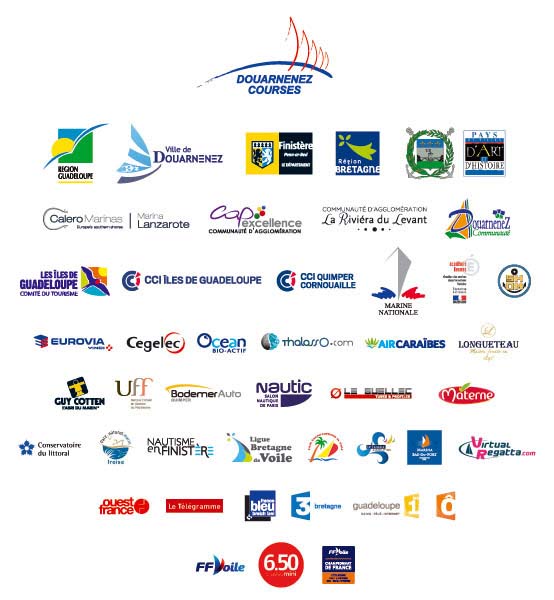
TOP
|